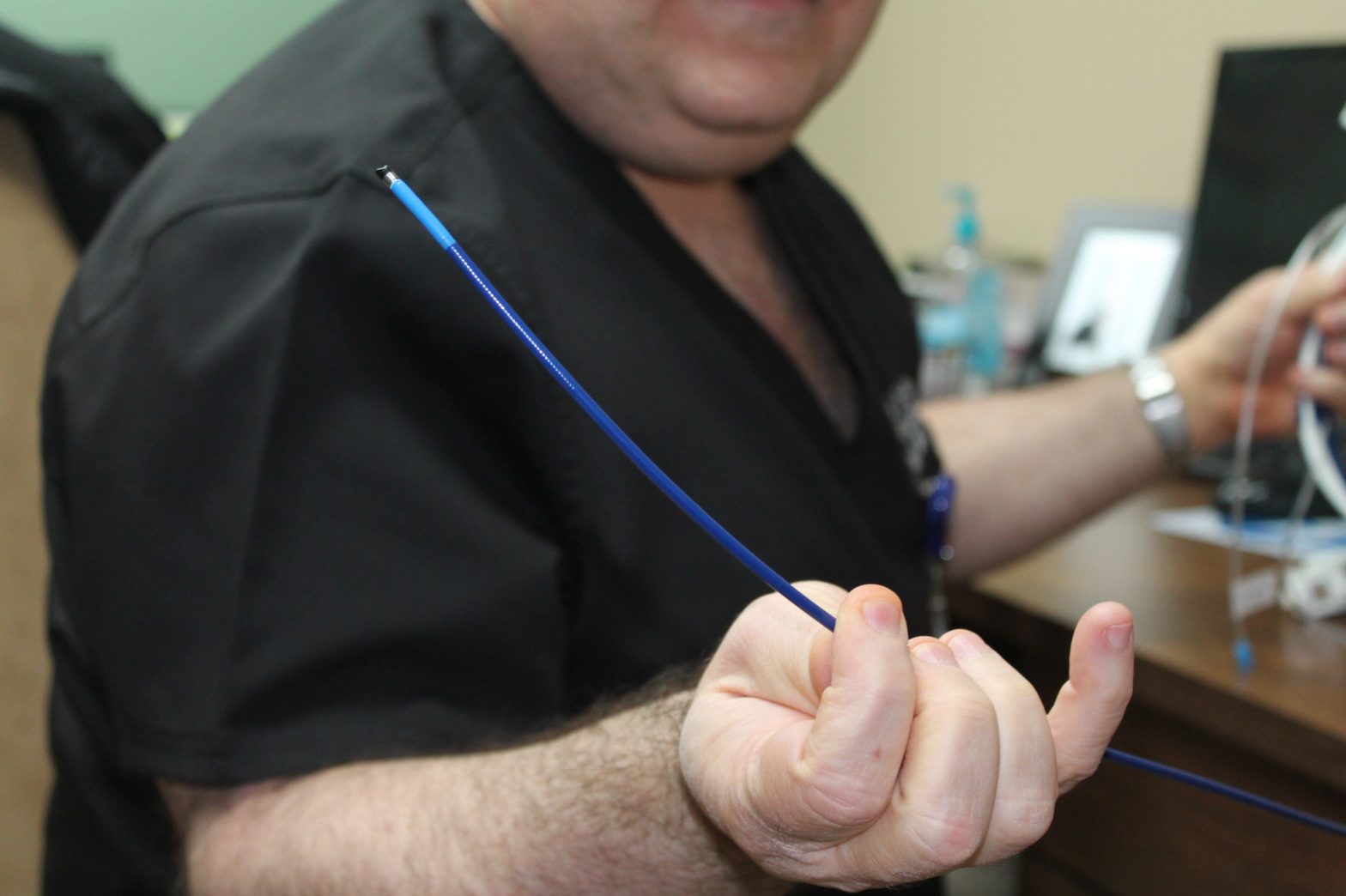
MILTON — Santa Rosa Medical Center is reportedly the only hospital in the Panhandle to acquire technology for advanced diagnosis and treatment of bile duct diseases, including blockages, gallstones and cancer.
Dr. Mounzer Soued, a gastroenterologist with Gastroenterology Associates of Pensacola, completed the first case using the SpyGlass DS Direct Visualization System Nov. 28 at Santa Rosa Medical Center.
Soued said the difference in quality of imaging is like comparing a console television set to a flat screen TV. He said when a patient has digestive problems, he or she first receives a blood test and an ultrasound, and then an endoscopic retrograde cholangiopancreatography. The technology available before SpyGlass was diagnosing the problem via an X-ray.
"When you see an abnormality … you assume it's a stone or something," Soued said.
The next step he said was to cut the eighth-inch opening of the small intestine wider to insert a balloon used to clean the potential blockage.
"If it's still there, we close up the patient and send him to New Orleans," or the nearest hospital with the SpyGlass technology, Soued said.
However, SpyGlass provides a front facing, full-color view inside the bile duct to see either the stones, cancerous tissue or other blockage.
SpyGlass can perform three functions, Soued said: looking, assessing and treating. In addition to the camera, the tool has forceps, to take tissue, and a laser to fragment stones.
Using the new technology can take an additional 10 minutes, Soued said, but can save a patient travel time and money for going to another city, like New Orleans or Jacksonville, to use the same tool.
In the two weeks that Santa Rosa Medical Center has had this technology, Soued has already used it in two procedures.
One patient came in with abdominal pain, Soued said. The standard X-ray view showed something unusual. However, Soued said, when he went in with the SpyGlass, he saw it was just the patient's normal anatomy. Without SpyGlass, he would have been forced, he said, to send the patient to another hospital with the technology, which means more travel time and costs, and another procedure.
"If the patient were 70 or 80 years old, you're concerned about side effects (of additional procedures)," Soued said.
Soued said his department handles 250 cases a year and 50 of those he previously would have to refer to other hospitals.
Now that Santa Rosa Medical Center has this technology, Soued said patients will have fewer treatments and SRMC has become one of the hospitals to which others may send their patients.
"Our practice is very pleased that Santa Rosa Medical Center invested in this technology that allows us to treat our patients locally," he said.



This article originally appeared on Santa Rosa Press Gazette: Santa Rosa Medical Center acquires breakthrough technology
